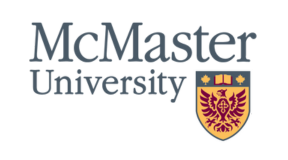Sustaining innovation within a business organization
 Ingenuity is the process of creatively solving a problem while defying, bypassing or overcoming certain constraints that inhibits a problem solver’s ability to come to a solution to the problem at hand. Ingenuity was once a new business practice that redefined the way American entrepreneurs approached innovation. Now, ingenuity is a norm in the business world.
Ingenuity is the process of creatively solving a problem while defying, bypassing or overcoming certain constraints that inhibits a problem solver’s ability to come to a solution to the problem at hand. Ingenuity was once a new business practice that redefined the way American entrepreneurs approached innovation. Now, ingenuity is a norm in the business world.
The challenge with ingenuity becoming a norm is when its actors have to work ingenious problem solving into the systematic, bureaucratic structure of most of today’s business organizations. Joseph Lampel, Professor of Strategy and Innovation at City University, Benson Honig, Professor of Human Resources and Management, and the Teresa Cascioli Chair at McMaster University’s DeGroote School of Business, and Israel Drori, Professor of management at the College of Management Academic Studies, explore this complex business challenge by delving into an innovative new field of research: organizational ingenuity.
The Nature of Ingenuity
Lampel, Honig, and Drori define organizational ingenuity as the “ability to create innovative solutions within structural constraints using limited resources and imaginative problem solving.” The researchers’ inquiry into organizational ingenuity shows that ingenuity within the systematic structure of business organizations is possible. Nevertheless, ingenious problem solvers often encounter three common constraints in the systematic setting of a business:
- Structural constraints: These primarily derive from a business’ standard operating procedure that tends to produce norms, rituals and rules that define the way an employee works within an organization. These constraints can often be worked around by avoiding them or protesting them.
- Resource constraints: When organizations significantly lack resources to achieve an objective, they have to become creative to meet their goals in a sufficient manner.
- Temporal constraints: Also known as time constraints, these limit the amount of time a person or an organization has to complete an objective. Depending on how long the time limit is, this constraint can either cause stress because of fast approaching deadlines or it can motivate one to be more decisive and clear about his or her actions.
As seen in the three common constraints, the researchers show that although constraints can have a negative impact on the way an employee works within a structured business setting, these constraints also surprisingly produce positive effects that can promote rather than inhibit ingenious problem solving.
Induced Problem Solving and Autonomous Problem Solving
When creative problem solvers work under these constraints, there are generally two approaches to viewing the emergence of a problem:
![]() Induced problem solving: The induced generation sees the problem emerging independent of the actors that are asked to solve it. For example, an executive or a top manager recognizes and defines a problem, then assigns it to individuals or groups that must solve the problem themselves.
Induced problem solving: The induced generation sees the problem emerging independent of the actors that are asked to solve it. For example, an executive or a top manager recognizes and defines a problem, then assigns it to individuals or groups that must solve the problem themselves.
Autonomous problem solving: In this generation the actors that define the problem are directly involved in the search for solutions. For example, this happens when a group or an individual recognizes a problem that is preventing them from achieving their objective and then sets out to solve the problem.
Product Constraints and Process Constraints
In both approaches to viewing the emergence of problems, Lampel, Honig, and Drori find that problem solvers generally face two types of organizational constraints:
- Product constraints: These constraints occur at the project level of an organization where the nature of a product(s) either partially or completely prevents an individual or a group from completing the project at hand.
- Process constraints: These constraints occur at the organizational level of a business organization and it tends to systematically limit or prevent problem solvers from reaching ingenious solutions.
The researchers note that dealing with process constraints is critical to organizational ingenuity because it affects problem solving more generally since process constraints often tend to make the organization of a business more prone to constraints at the product level.
Lampel, Honig, and Drori’s research demonstrates that ingenuity is not just a creative way to solve problems, but it is also an important part of how organizations develop and grow. As seen in the various dynamics, structures, and problems that occur in business organizations, organizational ingenuity is often a subtle process that many of its participants don’t even realize they are participating in.
Lampel, Honig, and Drori’s research on organizational ingenuity provides businesses with both the insight and reminder that problem solvers have to constantly be ingenious at both the product and process level of an organization in order for them sustain innovation within their business.
 Joseph Lampel, Benson Honig, and Israel Drori, “Organizational Ingenuity: Concept, Processes and Strategies”, Organizational Studies, Vol. 35, No.4, 2014, pp. 465-482.
Joseph Lampel, Benson Honig, and Israel Drori, “Organizational Ingenuity: Concept, Processes and Strategies”, Organizational Studies, Vol. 35, No.4, 2014, pp. 465-482.
Benson Honig is the Teresa Cascioli Chair in Entrepreneurial Leadership and a professor of human resources & management at the DeGroote School of Business.

Comment Policy
We generally welcome discussion on our blog posts. However, we reserve the right to edit or delete comments in certain situations:
This site is moderated by the DeGroote Marketing and Communications team. If you have any questions please email Katie Almas.